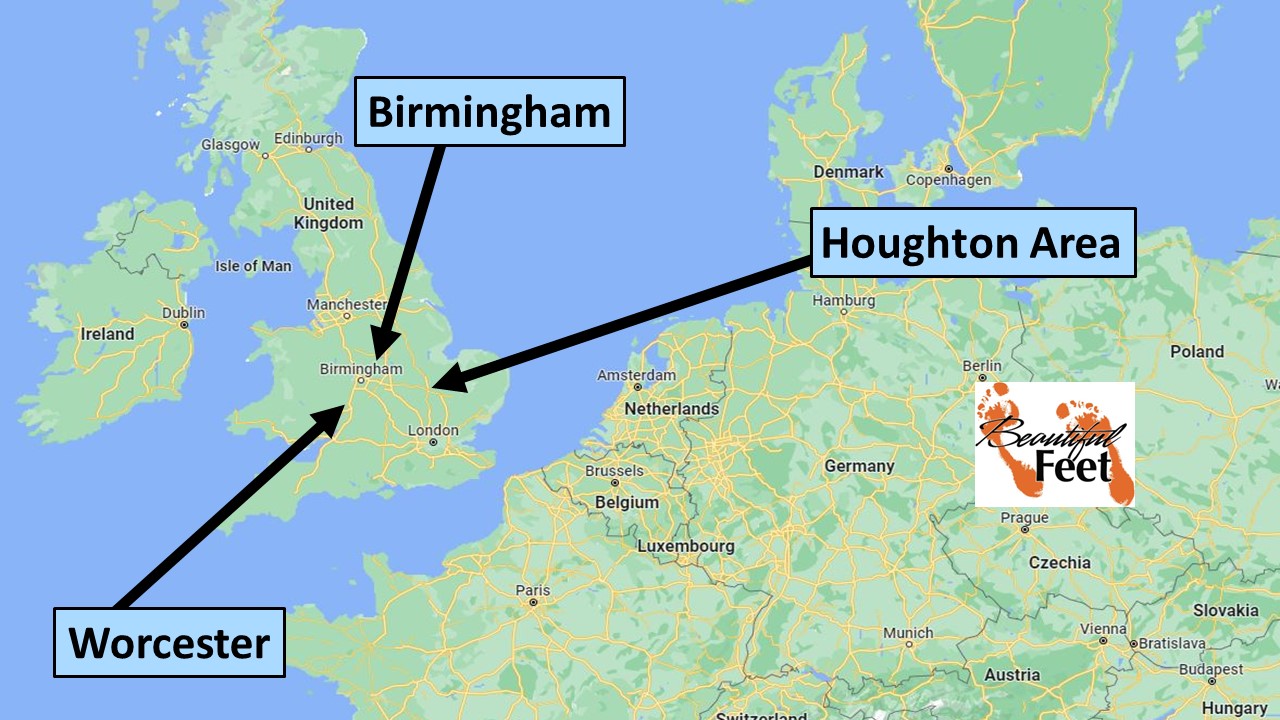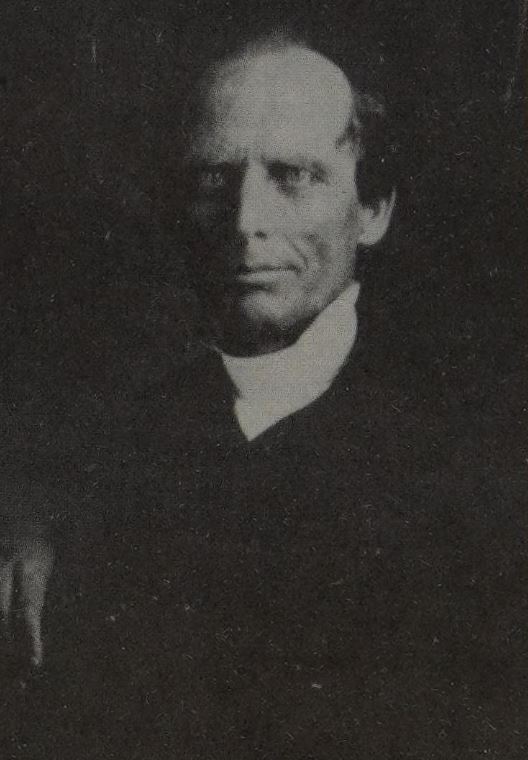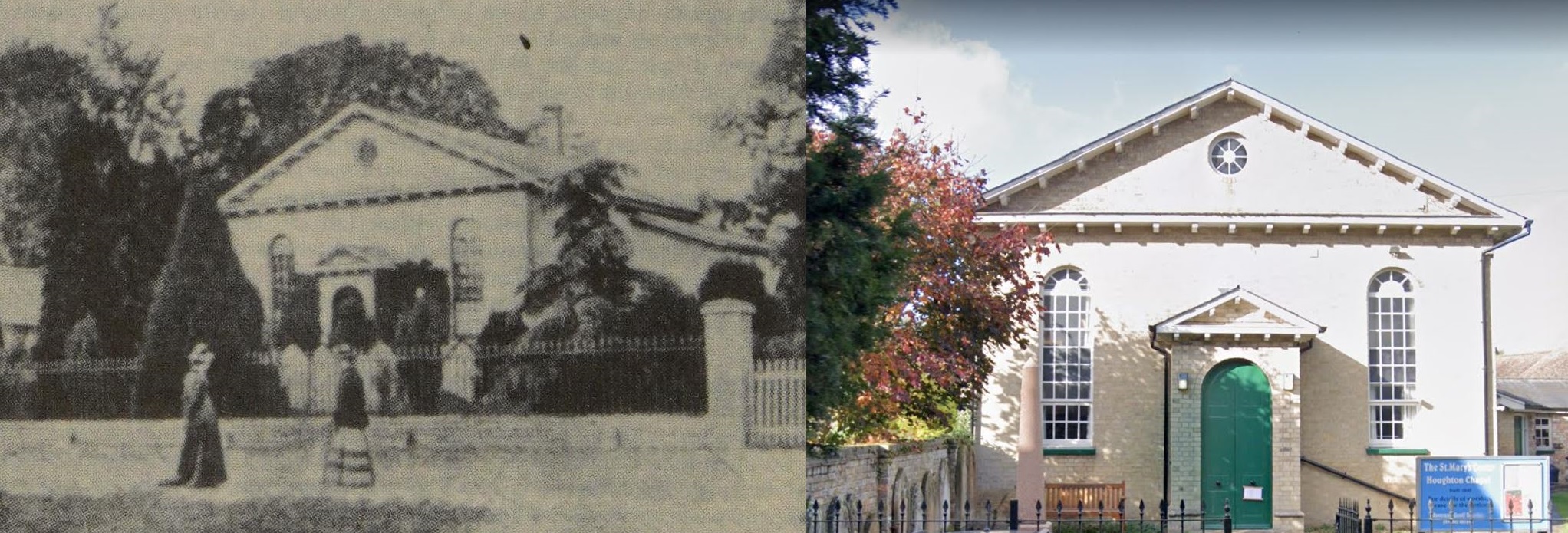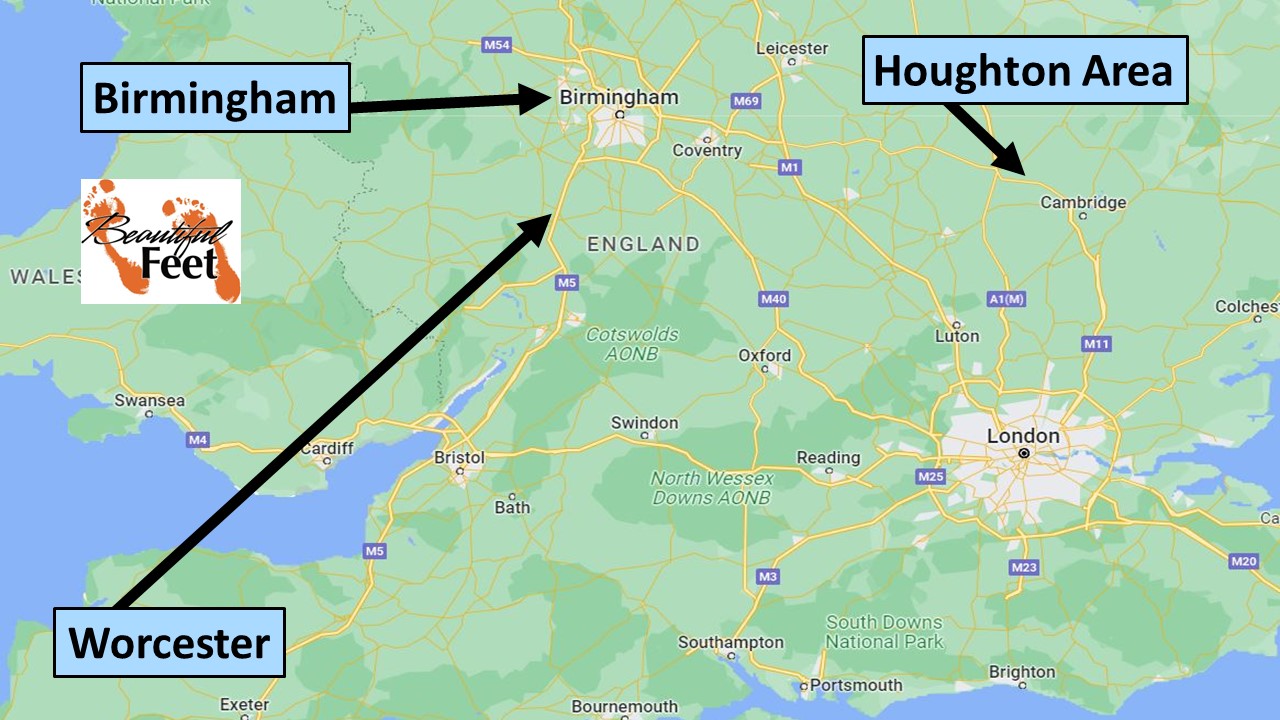1849 Revivals in Houghton, England (7 revivals)


Locations of the England Revivals

Charles Grandison Finney – Father of modern revivalism and the leading figure of the Second Great Awakening
Introduction
Charles G. Finney’s (1792-1875) unique methods of evangelism earned him the title of the “father of modern revivalism.” His methods paved the way for other mass-evangelists, like Dwight L. Moody, R. A. Torrey, John W. Chapman, Billy Sunday, and Billy Graham, who adapted and built upon Finney’s methods.
Background Information
With this revival account being one in a sequence of revivals during the life of Charles G. Finney, we recommend reading them in chronological order:
► 1824 Evans Mills German Settlement Revival
► 1824 Antwerp, New York Revival
► 1824 Revival at Perch River and Other Locations
► 1825 Revival in Gouverneur, New York
► 1825 Revival in De Kalb, New York
► 1825 Revival in Western, New York
► 1825 Revival in Rome, New York
► 1826 Revival in Utica, New York
► 1826 Revival in Auburn, New York
► 1826-1827 Revival in Troy, New York
► 1827 New Lebanon & Stephentown Revivals
► 1827-1829 Revival at Wilmington and Philadelphia
► 1829 Reading, Pennsylvania Revival
► 1829 Lancaster, Pennsylvania Revival
► 1829 Columbia, New York Revival
► 1830 New York City Revival
► 1830-1831 Rochester, New York Revival
► 1831 Revivals in Auburn, Buffalo, Providence, & Boston
► 1832 New York City Revival
► 1835-1840 Revivals in Oberlin, Ohio
► 1841-1842 Boston & Providence Revivals
► 1842 Rochester Revival
► 1842-1843 Revivals in Oberlin, New York, and Boston
Background in England
This account begins with a nationwide revival movement that was occurring in England during the 1830s-1840s affecting mainly the Nonconformist churches. This movement was greatly inspired by the revivals that were occurring in the United States (Second Great Awakening).
Potto Brown, a wealthy business owner in the Houghton, England, area, invested heavily in the spreading of the Gospel. Not only were schools established for children in the region, but he was also instrumental in helping with the startup of the Houghton Chapel in 1844.
Upon the start of that chapel, “there were many conversions and a general revival of religion ensued.”

Finney’s journey was from Oberlin, Ohio, to New York City,
then arriving in Southampton, England
From Oberlin, Ohio, to England
The pastor of the Houghton Chapel, Rev. James Harcourt, was having tremendous success in the evangelization and conversion of souls among the “poorer and lower classes,” and Potto Brown, the wealthy business owner, wanted the upper classes to also have an opportunity to be impacted by the Gospel.
Brown knew that Finney had tremendous experience of winning many lawyers, doctors, and business owners to Christ, so he wrote his first letter to Finney in February 1849, inviting him to come and minister in Houghton. (There were also many others from England who had been writing Finney letters, inviting him to come.)
Accepting Brown’s invitation, Finney and his wife left their home in Oberlin, Ohio, in the fall of 1849 and began their journey to England, leaving New York on Saturday, October 20, 1849, onboard the U.S. Mail Steamer Hermann.

Houghton Chapel: then and now images
After Finney’s arrival in England at Southampton, England, on Sunday, November 4, he was greeted by the pastor of Houghton Chapel, James Harcourt. Taking a train through London to Houghton, and after resting a few days, Finney began preaching at the Houghton Chapel on Sunday, November 11.

Location of Houghton and two other revival locations reported on in this revival account
Hospitality in the Home of Potto Brown
During Finney’s stay in Houghton he was a guest in the home of Potto Brown. Brown’s desire to see the upper class come to Christ led him to invite all his friends and acquaintances to come and visit him. And according to Finney,
They came in great numbers, so that his table was surrounded nearly every meal with divers persons who had been invited in that I might have conversation with them, and that they might attend our meetings.
Hospitality was the means Brown employed for the evangelization of his friends and acquaintances of the upper class. His strategy of opening his home for breakfast, lunch, and dinner was very successful, because according to Finney,
A revival immediately commenced, and spread among the people.
One Thousand-Seat Tent
With the Houghton Chapel’s 400 seats being filled at each meeting, Brown procured a tent that accommodated a little over 1,000, and it was also filled at each service. With all his investment, Brown saw every one of his friends and acquaintances converted to Christ.
The attendance numbers of over 1,000 at every service was remarkable, because Houghton’s population in 1849 was only about 500.

Other areas around Houghton that were impacted by the revival
In addition to the meetings in Houghton, Finney also preached in several other churches in the surrounding area, carrying the revival atmosphere into the region. Even after Finney’s departure that revival atmosphere continued for years.
A minister from a neighboring town wrote to Finney a few months after he left Houghton, giving him an update:
The work is still going well it appears to me that God blessed your labours particularly to the stirring up of professors [believers]. Bro. Harcourt has now a working church and preaches in a praying atmosphere, so that his labours are evidently far more successful than they have been. Religion among them seems to be quite a contagion.
Finney’s Departure from Houghton
Even with the great success in the conversion of souls, some church leaders in the surrounding region were reluctant to fully embrace what God was doing. With doors being closed to Finney making a greater impact, he left Houghton around the middle of December 1849 to follow up on another letter of invitation for him to minister in the city of Birmingham, England, and it was there that yet another revival broke out.
Revival in Birmingham, England
From Houghton to Birmingham
After Finney’s work came to a close in Houghton, he followed up on another invitation he had received while still in Oberlin, Ohio, and that invitation came from the Rev. Charles Hill Roe, who was pastoring a church in Birmingham.
The Revival Commenced
In a meeting of Birmingham independent ministers, they agreed to have Finney preach alternately in their churches. He first began preaching in Roe’s church for a few weeks, where “a powerful revival” broke out. The revival atmosphere was so startling, that one person wrote:
It was a state of things that they had never seen.
For five weeks Finney was preaching in the other churches around Birmingham, and then he settled to preach in just one, the second largest in the city—Ebenezer Chapel on Steelhouse Lane.
Inquiry Meetings
The custom of the time was to invite those desiring salvation, or that were inquiring about salvation, or that were anxious about the state of the eternal souls, to attend an inquiry meeting outside the regular church service. These inquiry meetings would be used to tell people specifically what they needed to do to receive Christ’s offer of salvation. There was also teaching for new converts that accompanied these meetings.
The revival in Birmingham was so extensive that there wasn’t a room large enough in which to hold these inquiry meetings. The room they used was only able to hold 500, insufficient for the numbers that wanted to gain entrance.
Rev. Peter Sibree, a Birmingham Congregational minister, wrote the following about Finney’s work in that city:
His visit to our town was a great boon. Some in my congregation will eternally thank him.
Opposition to Revival
As in all revivals, there was resistance in Birmingham. Some of the opposition was caused by American ministers that previously came to England and disseminated false information, speaking ill of the revivals Finney had led in the United States. The information that was spread about Finney filled the minds of ministers and people with negative thoughts about him. Some claims that were made about Finney’s American revivals, and of Finney himself, were:
► The revivals were disastrous for the churches.
► Finney was a heretic.
► Finney had become an infidel (turned away from the faith).
Departure from Birmingham
Finney remained in Birmingham for 3 months, leaving around the middle of March, 1850. His purpose for leaving was not due to opposition, but due to exhaustion.

Charles Finney and Elizabeth, his second of three wives. His wives accompanied him on his ministry trips.
Revival in Worcester, England
From Birmingham to Worcester
Finney departed Birmingham and went to Worcester so he could get rest in the home of a friend. He did not go there with the intention of preaching or holding services in that city, but upon his arrival he immediately received an invitation to hold services, and after a week of rest, he started his work at two Baptist churches.
The Worcester Revival
Even though Finney was ministering in Worcester for just over a month,
There were very many interesting conversions in that city; and… the work was very powerful and interesting indeed.
The pastor of one of the Baptist churches said that “he had never witnessed the like nor had he ever expected to witness such a scene.”
► All classes were affected.
► People from surrounding towns came and were part of it.
► There were so many people at the inquiry meetings (new convert meetings) that the entire church building was filled.
The fruits were very great. Nor did the work cease upon Mr. Finney’s departure, but continued for months under the labor of Dr. Redford [the Baptist church pastor].
Departure from Worcester
Finney departed Worcester on May 5, 1850, to commence work with two churches in London, and soon after he started there, the 1850-1851 London Revival began.
Finney Revival Account List
Access all accounts of Finney’s revivals using this link.
Primary Sources
► Chapter XXIX England Revivals: The Memoirs of Charles G. Finney by Charles G. Finney
► The Memoirs of Charles G. Finney: The Complete Restored Text by Charles G. Finney
Secondary Sources
► Charles G. Finney by Wikipedia
► Charles Grandison Finney & the Second Phase of the Second Great Awakening by Christian History Institute
► Great Revivals and the Great Republic by Warren Candler
► Man of Like Passions: The Life Story of Charles Grandison Finney by Richard E. Day
► Memoirs of Revivals of Religion by Charles G. Finney
Return to List of Revival Stories
Chet & Phyllis Swearingen:
Office: (260) 920-8248
romans1015@outlook.com
Beautiful Feet
P.O. Box 915
Auburn, IN 46706

